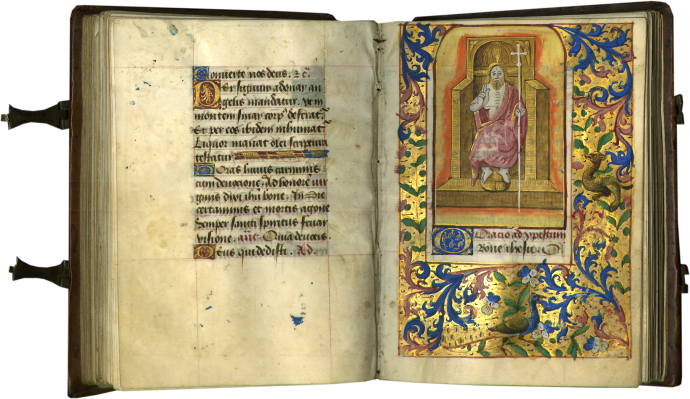


Book of Hours (unidentified Breton use)
, Central France, Loire Valley, c. 1490-1500











Book of Hours (unidentified Breton use)

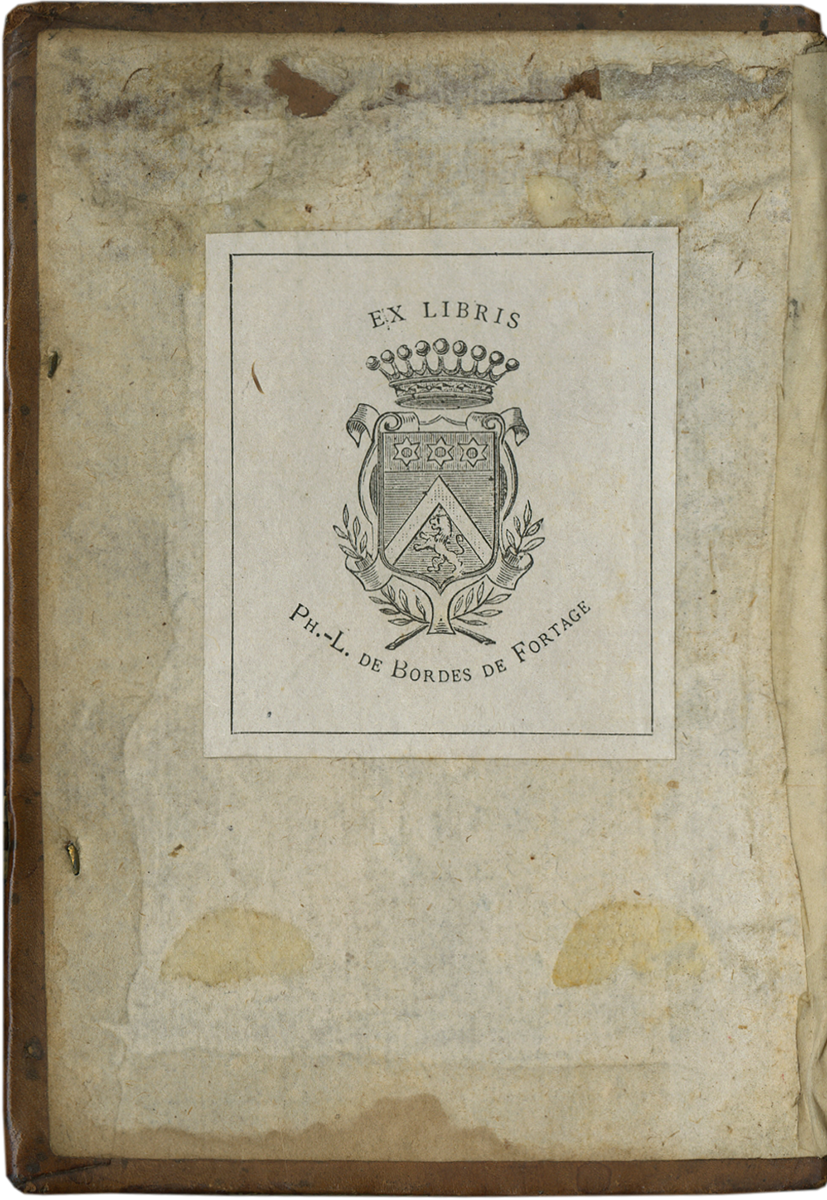
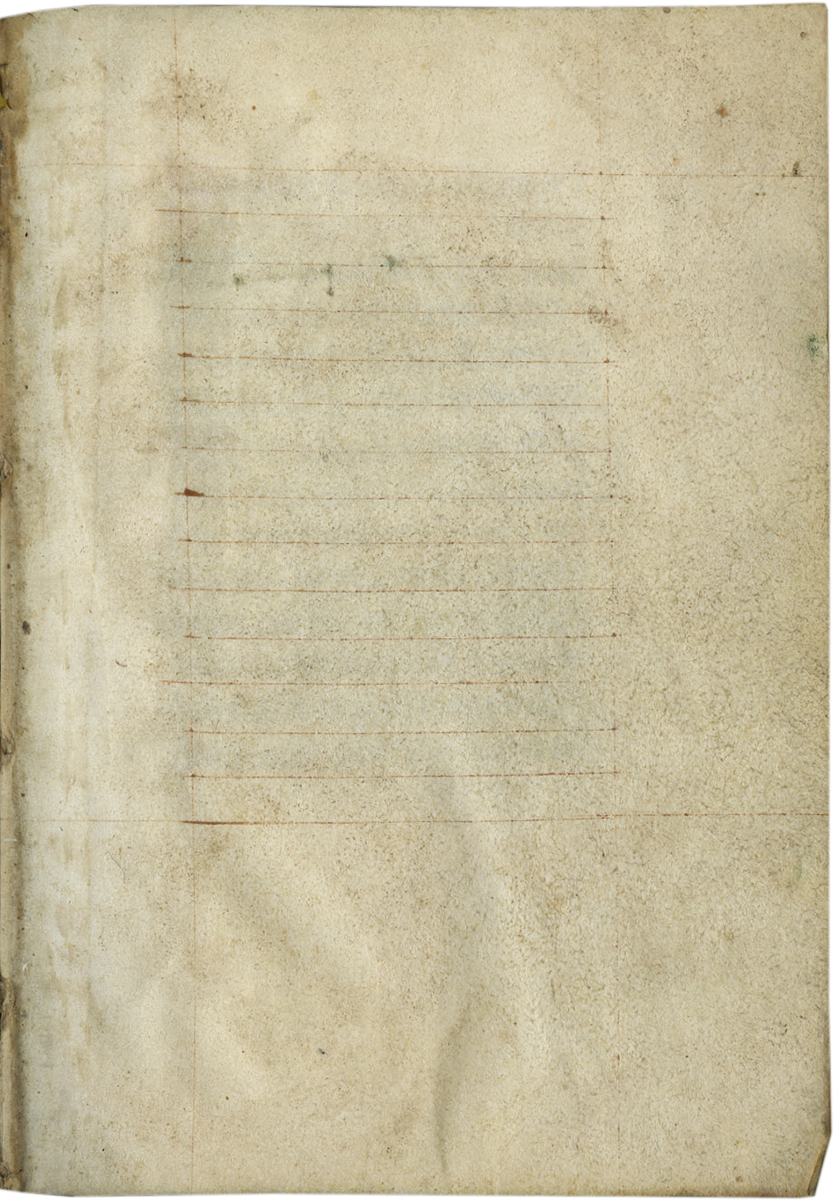



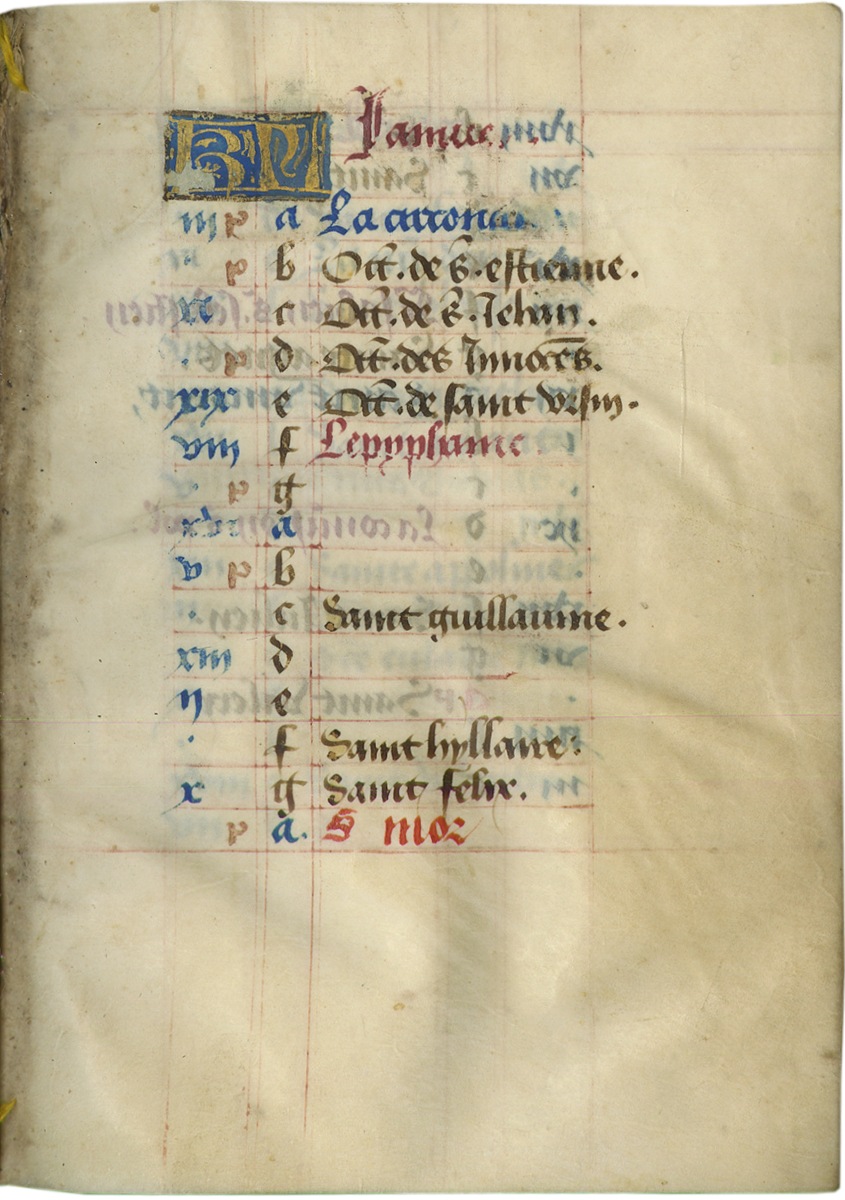






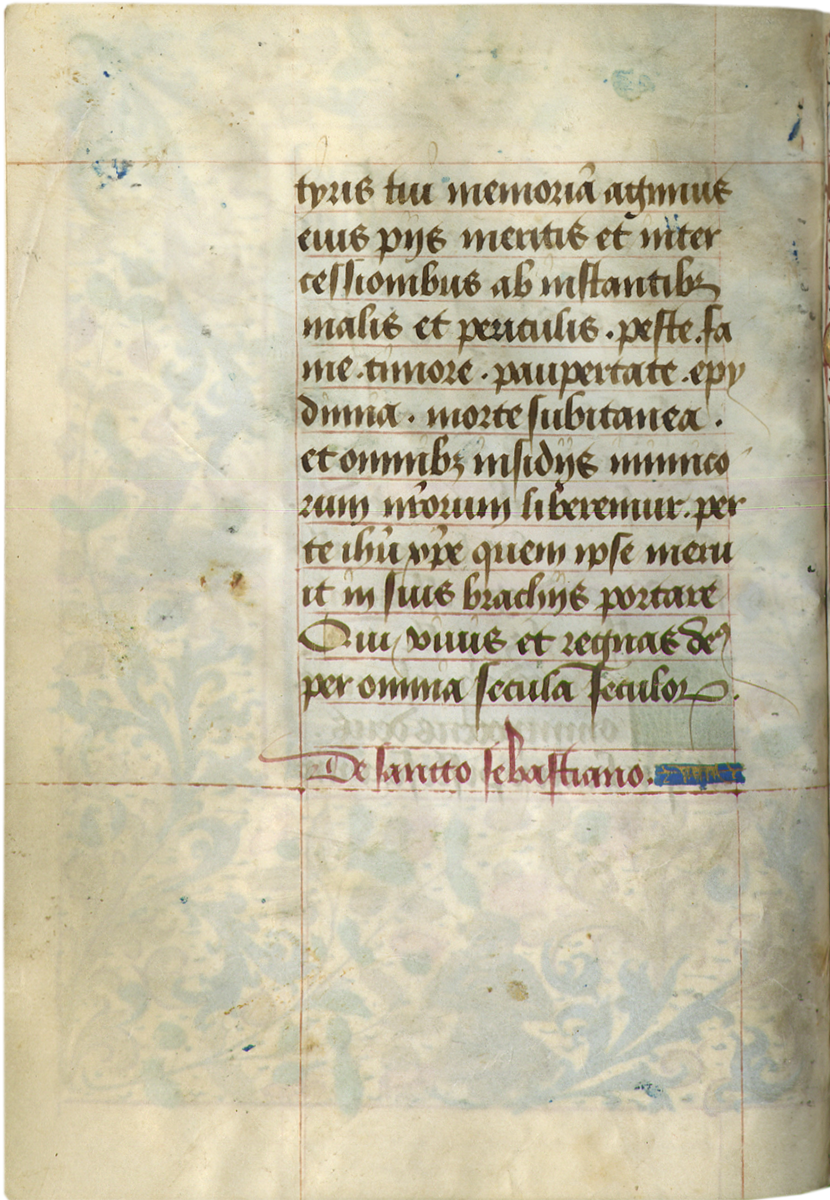

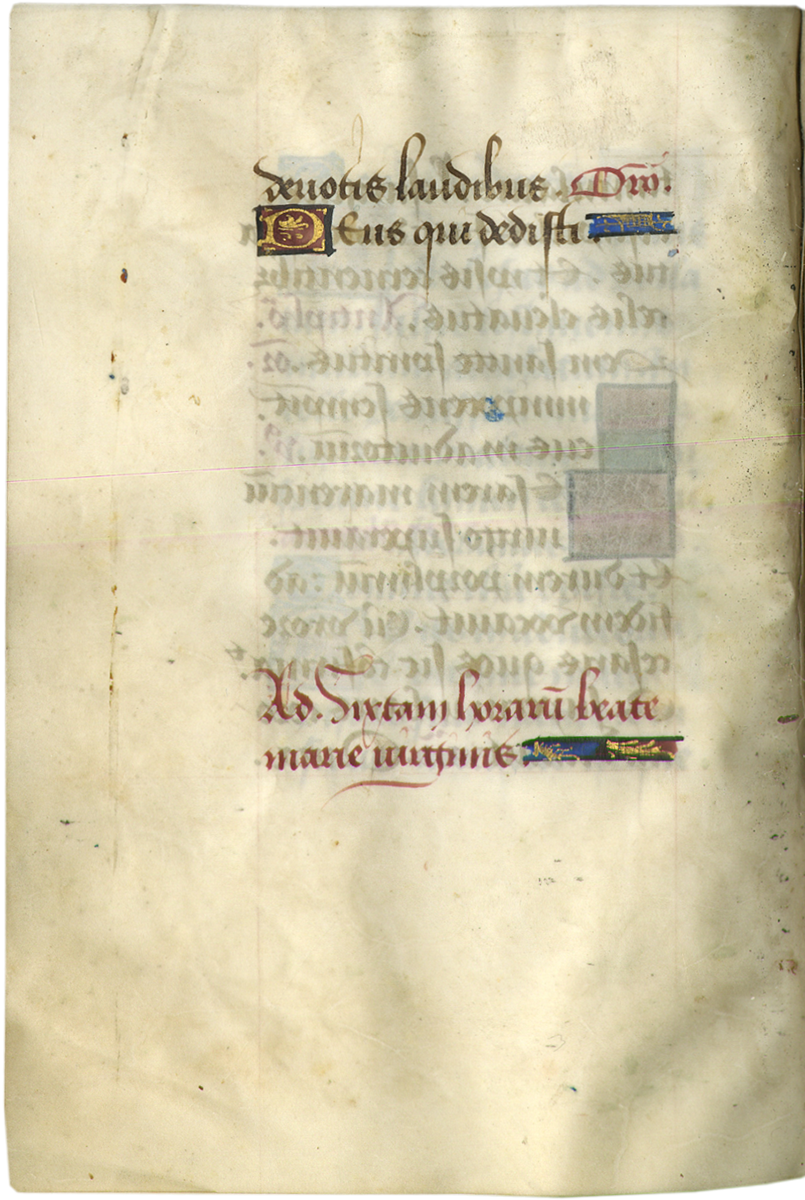
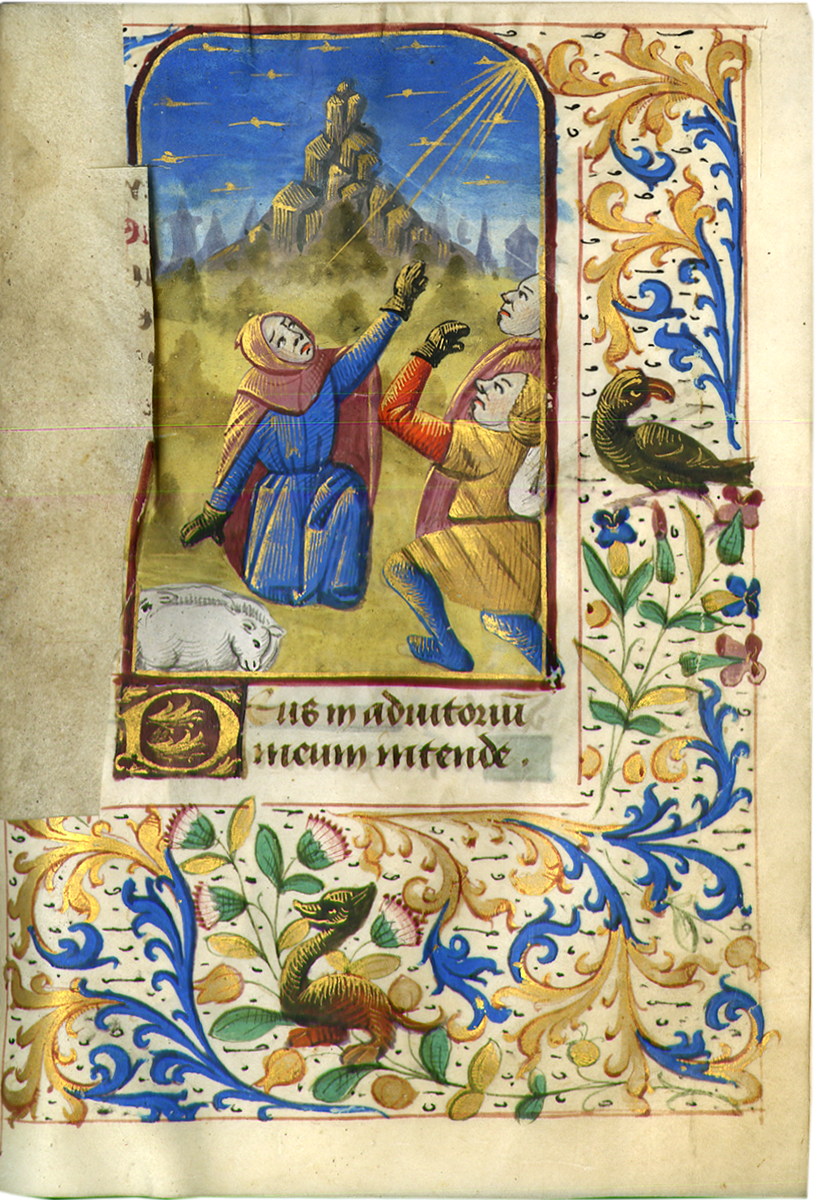

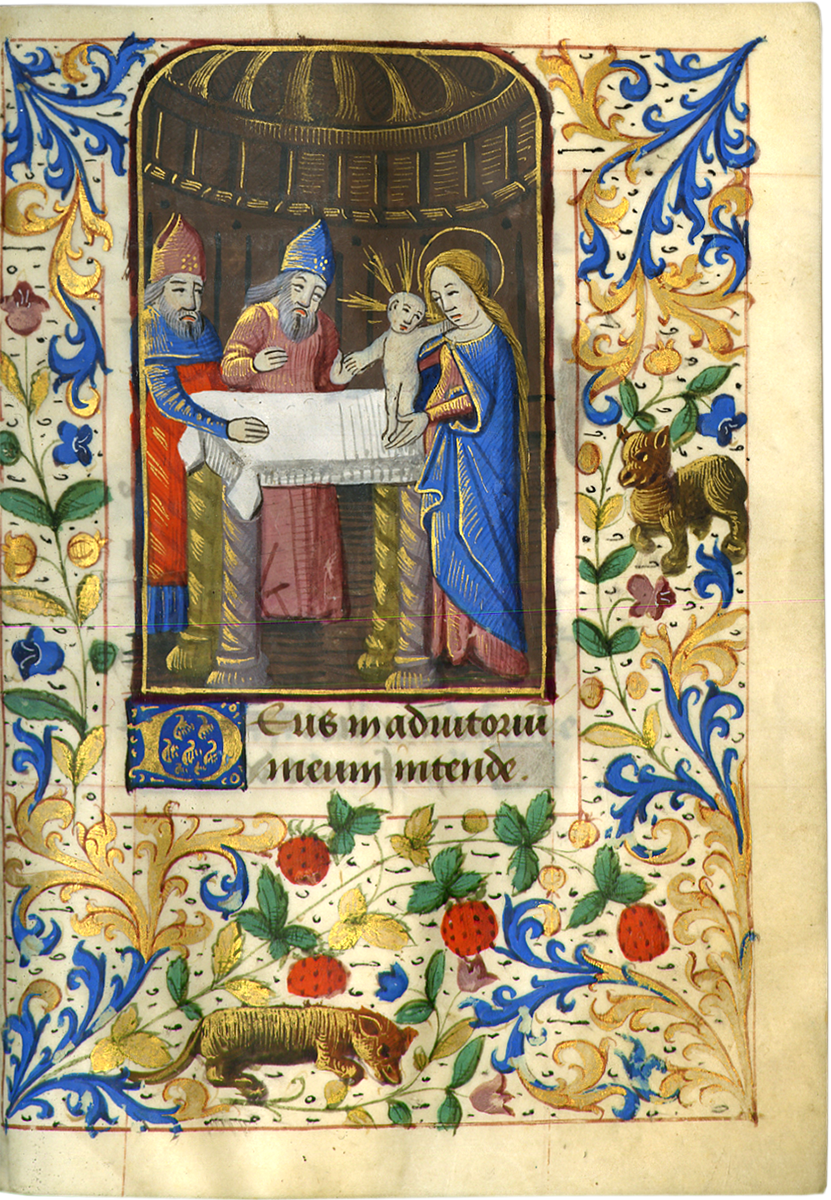

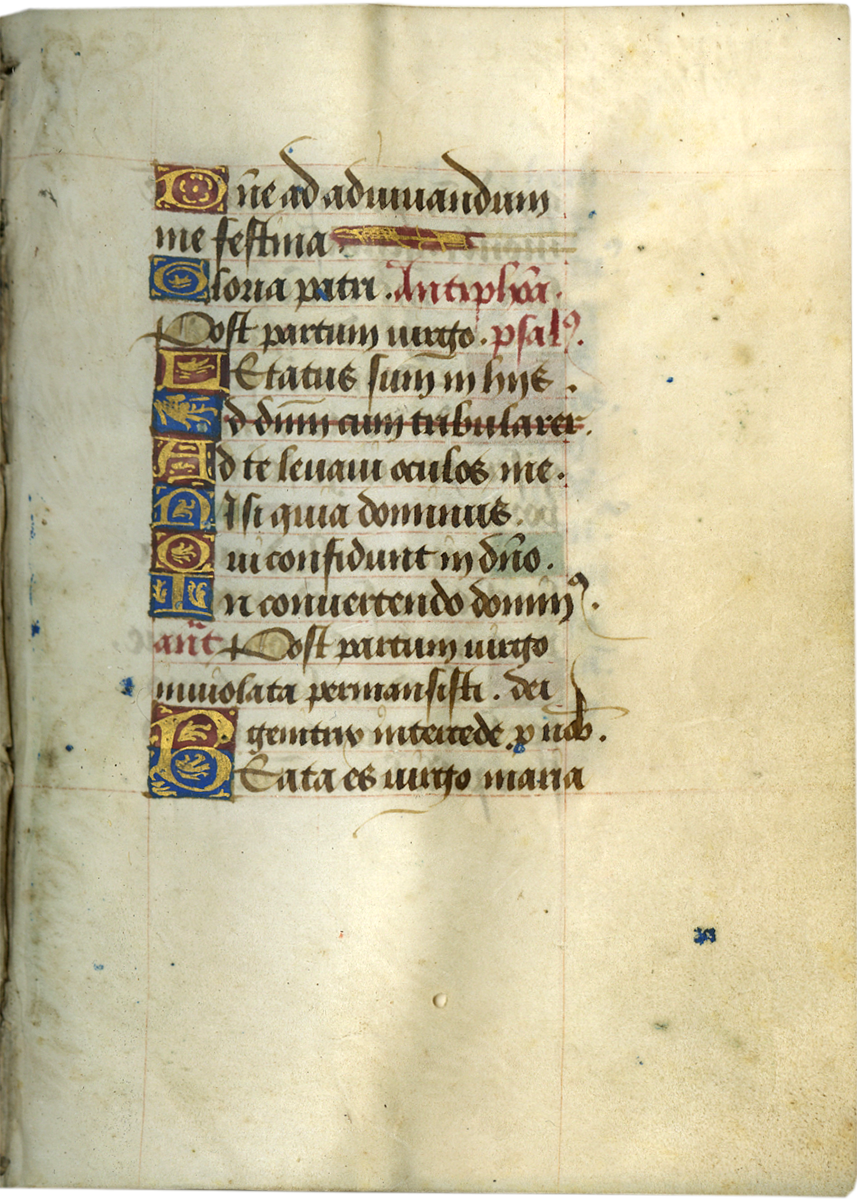
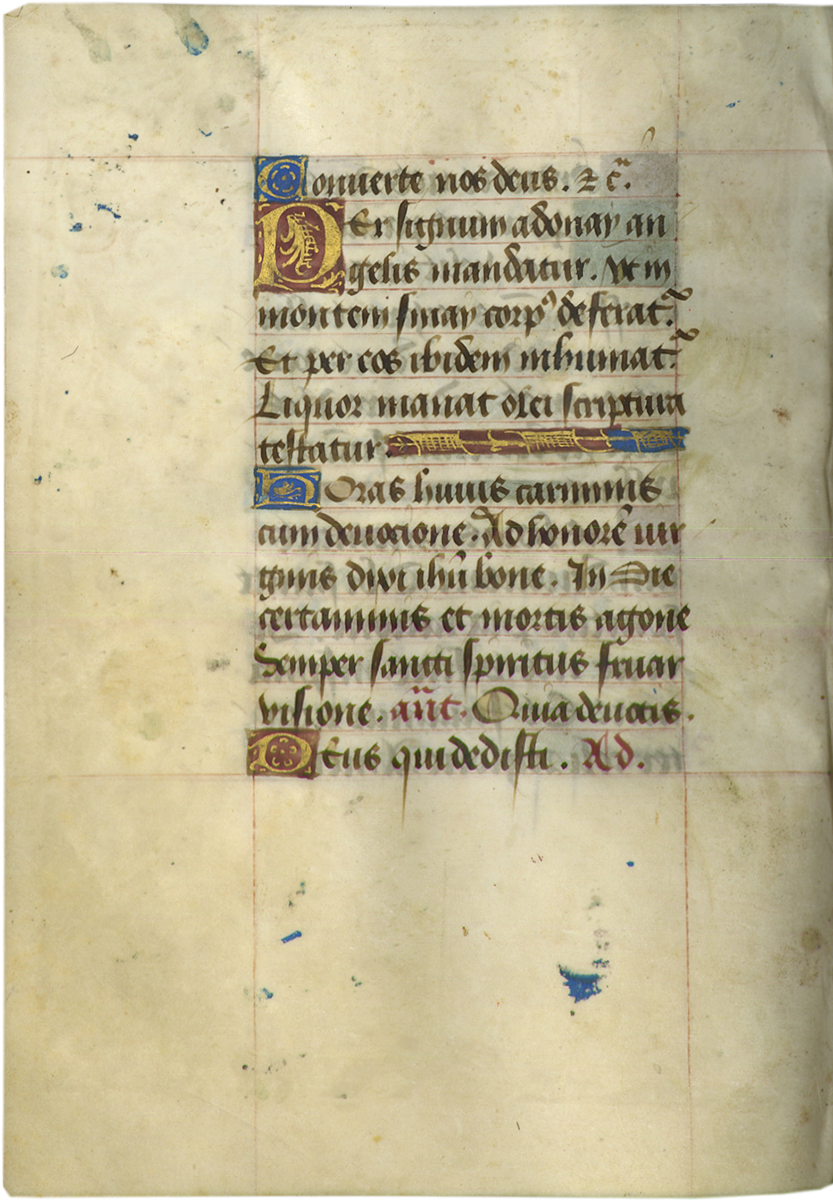
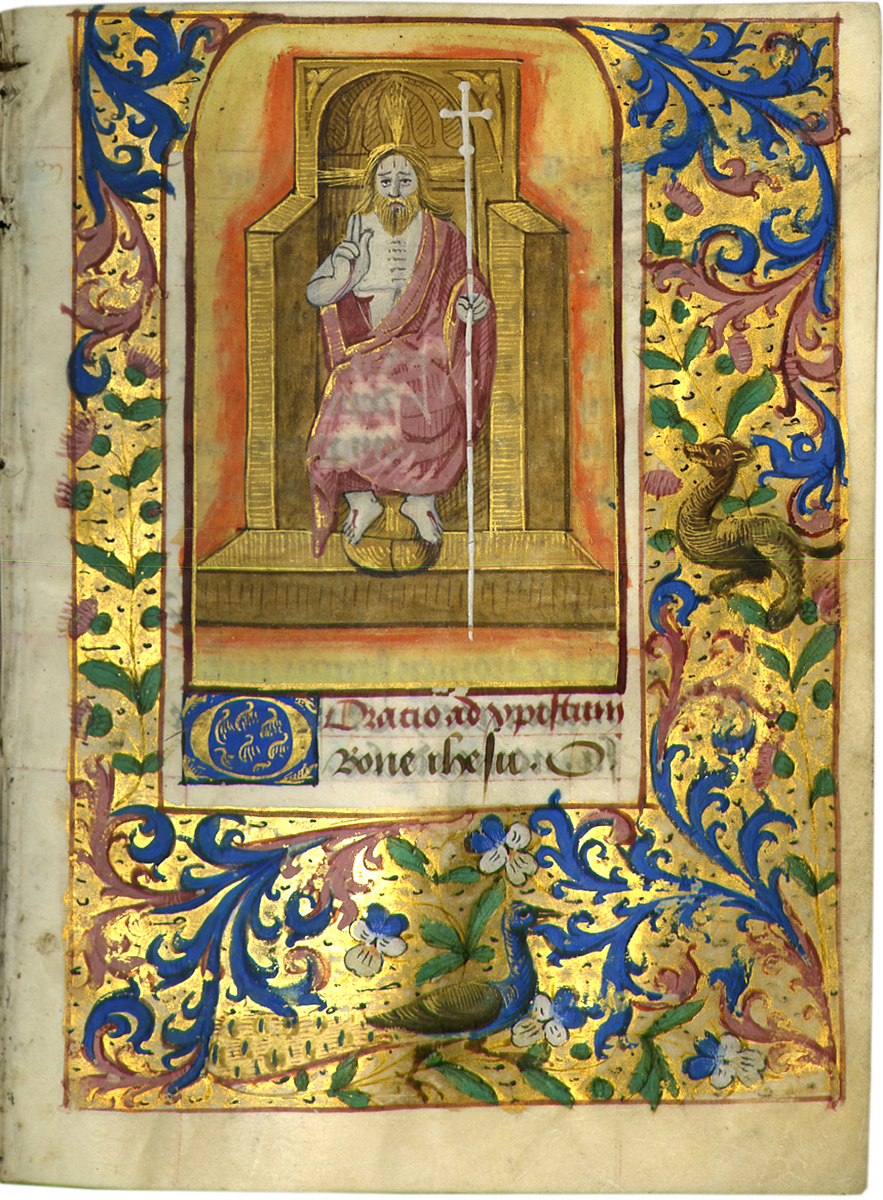
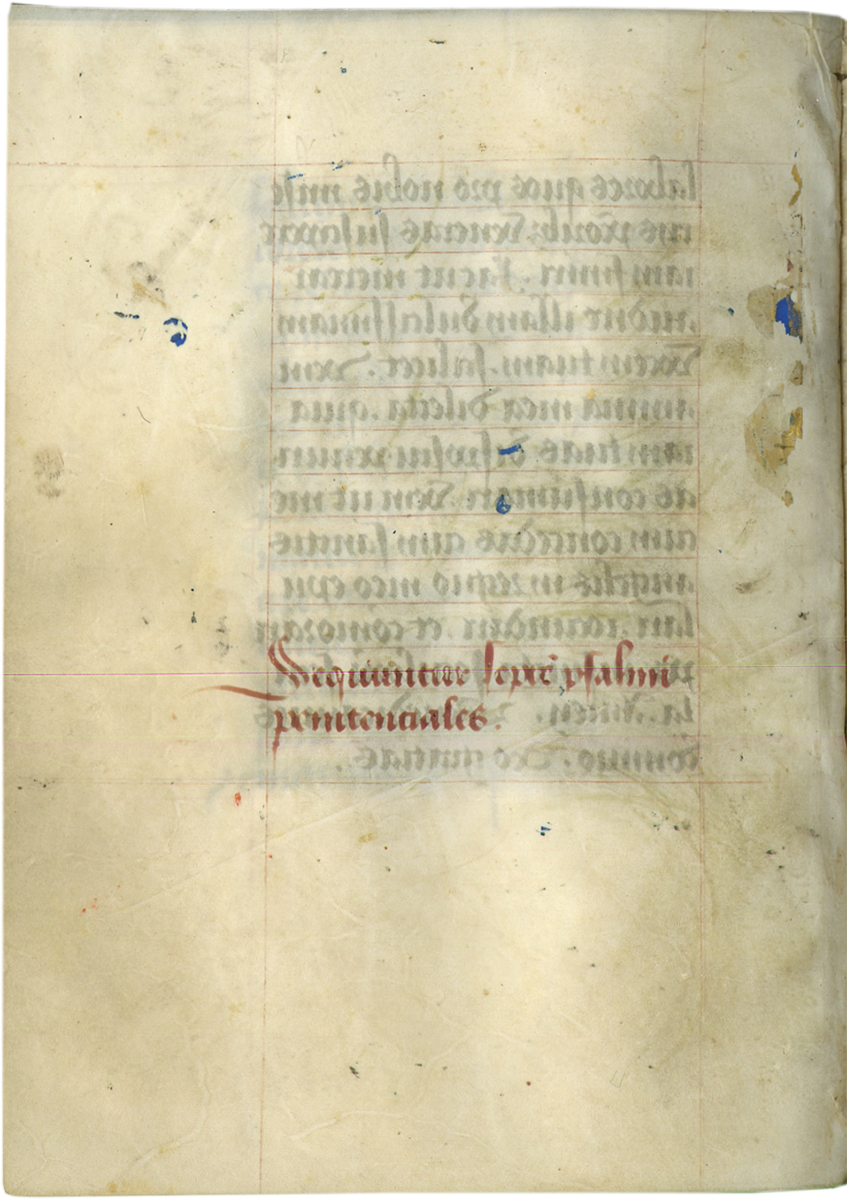


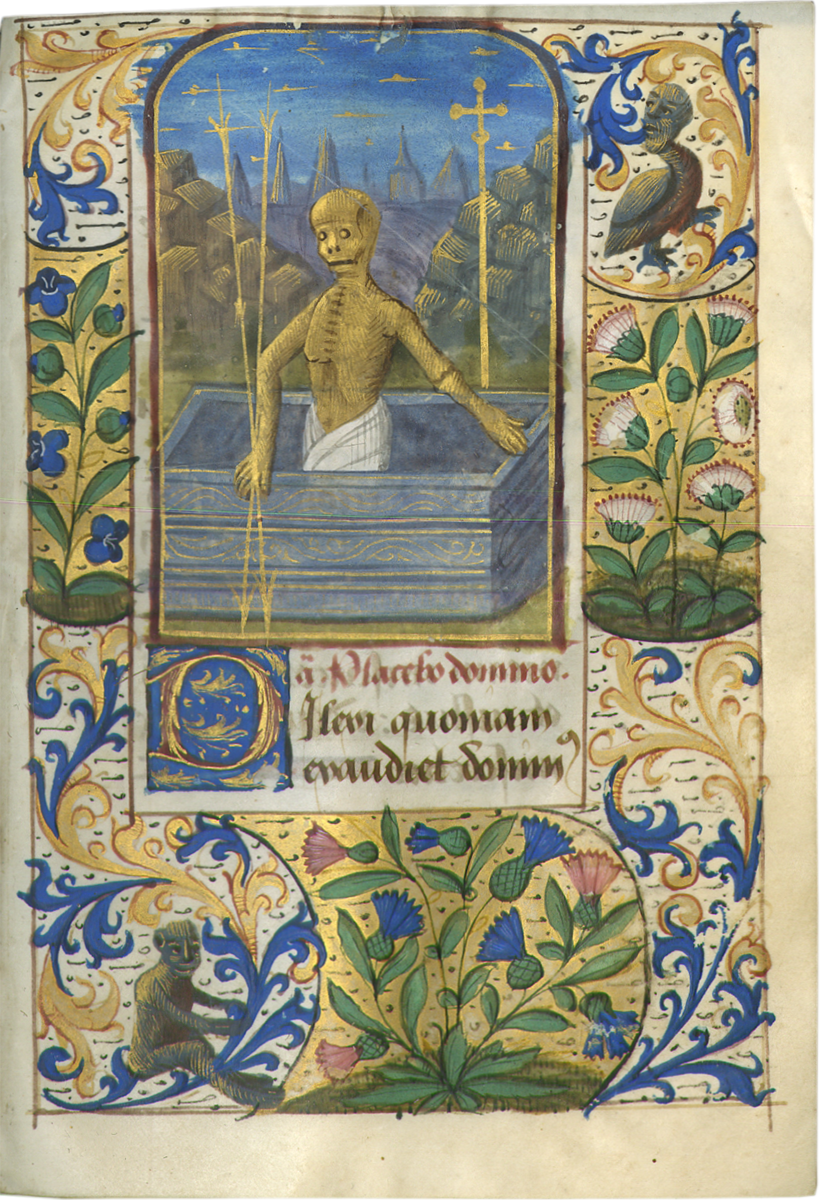

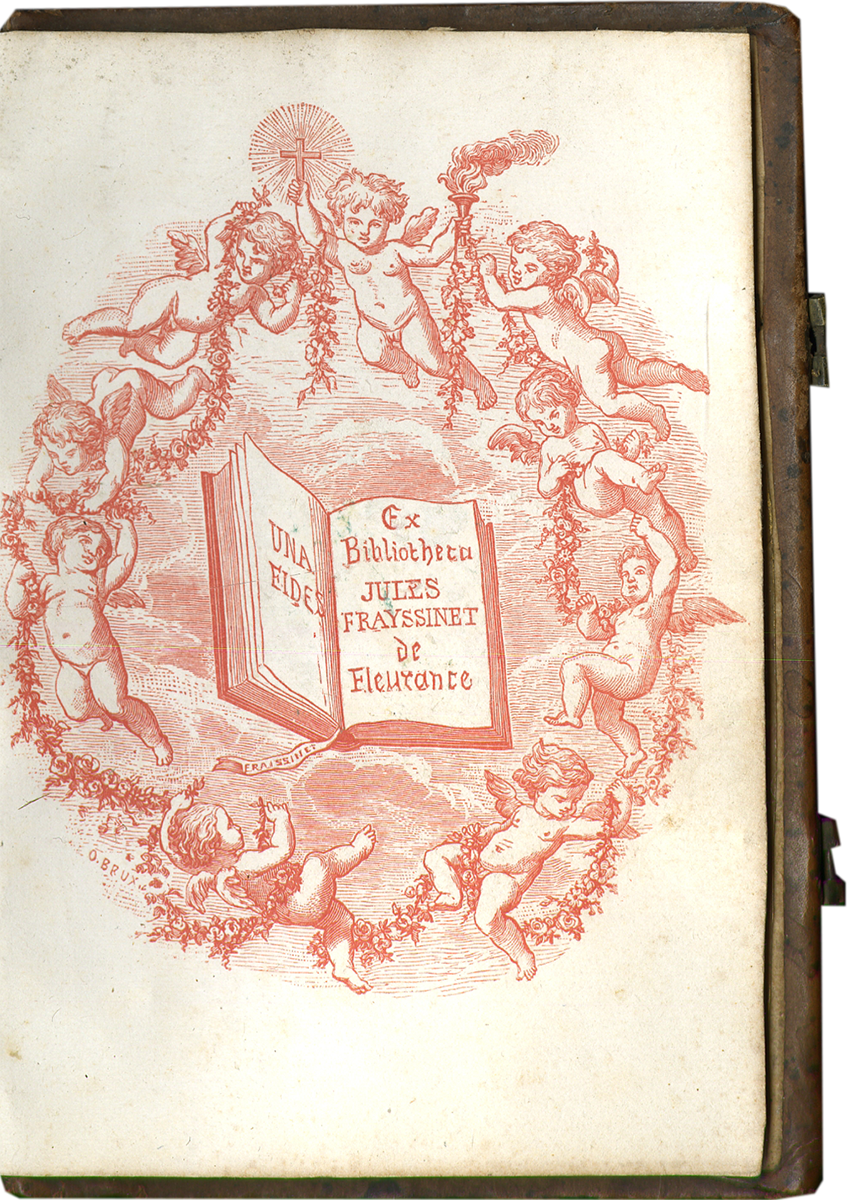
Description
This small Book of Hours was copied and illuminated on very fine and thin leaves of parchment, allowing for a surprisingly slim, hand-held volume despite the original 201 leaves. The contents are rich in prayers and miniatures, with the Death Rising from the Tomb providing a remarkable memento mori image. The manuscript was likely made for a relative of Anne of Brittany.
188 + i (modern paper) folios on parchment, modern foliation in pencil, 1-188, lacking thirteen leaves, including eleven with miniatures (collation i7 [-2, -3, lacking two leaves after f. 1, perhaps blank or possibly with frontispiece miniatures] ii-iii6 iv8 [-8, lacking one leaf after f. 24, with loss of a miniature and text] v9 vi8 [-1, lacking one leaf after f. 33, with loss of a miniature and text] vii8 [-6, lacking one leaf after f. 45, with loss of a miniature and text] viii8 ix8 [-4, -6, lacking one leaf after f. 58 and one leaf after f. 59, with loss of two miniatures and text] x8 [-8, lacking one leaf after f. 68, with loss of a miniature and text] xi6 [-6, lacking one leaf after f. 73, with loss of a miniature and text] xii8 [-4, lacking one leaf after f. 75, with loss of a miniature and text] xiii4 xiv10 [-2, lacking one leaf after f. 85, with loss of a miniature and text] xv2 xvi9 [-5, lacking one leaf after f. 99, with loss of a miniature and text] xvii8 xviii10 xix6 xx10 xxi6 xxii10 xxiii6 xxiv1O xxv6 [-6, lacking one leaf after f. 174, with loss of a miniature and text] xxvi12 xxvii2), one vertical catchword on f. 184v, ruled in red ink (justification 59 x 40 mm.), written in brown ink in a cursive gothic bookhand on 14 lines, capitals touched in yellow wash, 1- to 2-line initials and line-fillers in burnished gold on burgundy and blue grounds with very fine gold feathering inside the initials, nine full-page miniatures within full floral borders enlivened with grotesques modeled in camaïeu d’or, partial loss of margins on ff. 76, 80, 140 and 146 (perhaps containing marks of ownership, such as a coat of arms, that were removed), restored with parchment, a small tear in the outer margin on f. 174, small stains and signs of use, otherwise in very good condition. Bound in the seventeenth century, double-filleted gold-tooled border on speckled calf, spine gold-tooled with fleurons, brass clasps and catches, the lower clasp is broken, gilt edges, binding overall quite worn. Dimensions 113 x 81 mm.
Provenance
1. The evidence of text and illumination allows us to conclude that this Book of Hours was made in the Loire Valley for someone with Breton connections, perhaps a relative of Anne of Brittany. A Breton patron who was summoned to the court of Anne and Charles VIII in Amboise in the Loire Valley (diocese of Tours) would explain the liturgical elements of the book.
Liturgical evidence indicates that this book of hours was made for use in Brittany. The litanies include the following Breton saints: St. Samson of Dol, St. Brioc (fr. Brieuc), abbot of Saint-Brieuc, St. Tugdual (Tudwal) of Tréquier, St. Guillaume Pinchon, bishop of Saint-Brieuc, St. Malo (Maclou), bishop and founder of Saint-Malo, and St. Ivo of Kermartin, the patron saint of Brittany. The Hours of the Virgin follow an unrecorded use, most likely in Brittany (discussed below), and the Office of the Dead follows a liturgical use that J.-L. Deuffic identifies in the diocese of Rennes (Deuffic, 2019, p. 451), but which K. Ottosen has also found in manuscripts localized in the dioceses of Dol in Brittany, as well as Coutances, Rouen and Lisieux in Normandy, and Metz in Lorraine.
However, the calendar includes in red the translation of St. Gatianus of Tours on May 2 as well as his dies natalis in brown ink on December 18. This liturgical detail, in addition to the use of blue ink in the calendar and the style of the miniatures suggest that the manuscript was copied and illuminated for a Breton patron in the Loire Valley by a local scribe and illuminator. As the illumination suggests dating the manuscript in the 1490s, it is likely the book was made for a relative of Anne of Brittany, Queen of France (r.1491-1498 and 1499-1514). A Breton patron who was summoned to the court of Anne and Charles VIII in Amboise in the Loire Valley (diocese of Tours) would explain the liturgical elements of the book.
Two other clues which may shed light on the original owner of this book. Unusually, the Suffrages begin with St. Catherine, placed before the male saints, suggesting special veneration of this saint. And there is an emblematic motto written in a contemporary hand in gold letters on a red bar resembling a line-filler, “pour le teautre(?)” at the end of the text on f. 188,
2. The engraved ex libris of Jules Frayssinet (b. 1833) of Fleurance (Gers, Occitanie), with winged putti and garlands, printed in red ink on thick paper, is pasted as the back flyleaf.
3. Inside the front cover is pasted the armorial bookplate of Philippe-Louis de Bordes de Fortage (1846-1924), the famous bibliophile of Bordeaux; our manuscript is no. 67 in Catalogue de la Bibliothèque de M. Ph.-L. de Bordes de Fortage, Bordeaux, Mounastre-Picamilh, 1924.
Text
f. 1r-v, ruled, otherwise blank;
ff. 2-5v, Prayers for the Mass with rubrics in French: f. 2, Quant on leve le corps de nostre seigneur d’y, incipit, “O salutaris hostia...”; f. 2v, Aultre oraison a la levation du corps, incipit, “Ave Domine Iesu Christe...”; f. 3v, Quand on leve le calice d’y, incipit, “Ave vere sanguis Domini nostri...”; f. 4, Aultre oraison a nostre seigneur, “Salve sancta caro Dei...”;
ff. 6-17, Calendar in French, with major feasts alternating in red and blue ink; including St. Guillaume of Bourges (10 January), St. Maur, in red (15 January), St. Honorina, venerated especially in the dioceses of Bayeux and Rouen (27 February), St. Gatianus of Tours, in red (2 May, translation; his dies natalis feast on 18 December is included in brown ink), St. Ivo (19 May), St. Hildebertus, bishop of Meaux (27 May; in addition to Meaux, venerated at Le Bec in the diocese of Rouen), St. Vaast (Vedast), the first bishop of Arras (15 July), St. Louis IX of France (25 August), St. Francis of Assisi (4 October), St. Denis of Paris (9 October), St. Malo (15 November), and in red the translation feast of St. Ursinus of Bourges, whose relics were given to the town of Lisieux in Normandy (30 December; the octave of the translation is also included on 5 January; however, his dies natalis feast on 9 November is not included, indicating that the manuscript was intended for use in Normandy/Brittany and not in the diocese of Bourges).
An interesting non-liturgical remark was noted on 20-21 July: “Fin de temps caniculiers” (the end of scorching weather).
ff. 18-24v, Gospel Extracts;
ff. 25-28v, Obsecro te, lacking the opening miniature, beginning imperfectly “...gabrielem archangelum annuntiatus et conceptus...”; masculine forms;
ff. 29-33v, O intemerata;
ff. 34-58v, Hours of the Virgin, Matins and Lauds, beginning imperfectly, “Venite exultemus Domino...” (Ps. 94), and lacking the opening miniature and beginning of text; ff. 46-58v, Lauds, lacking the opening miniature and beginning of text;
ff. 59-68v, Suffrages of St. Catherine (lacking a miniature of St. Catherine after f. 58), (another leaf missing after f. 59 with a miniature and prayers to an unidentifiable saint), St. John the Baptist, St. Paul, St. Christopher (miniature), St. Sebastian (miniature), St. George, St. Anthony, St. Barbara, and St. Apollinus;
A rubric on f. 68v announcing the beginning of Prime in the Hours of the Virgin confirms that this first set of Suffrages was intended to be bound between Lauds and Prime.
ff. 69-73v, Hours of the Virgin, Prime, beginning imperfectly, “//[prote]ge, et hora mortis suscipe...” (hymn Memento salutis auctor), and lacking the opening miniature and beginning of text; and now ending imperfectly in the antiphon O admirabile commercium, with the leaves that continue the text bound out of order as ff. 77-79v;
ff. 74-76v, Suffrages of St. Maur (lacking a miniature of St. Maur after f. 73), St. Martin, St. Nicholas, St. Stephen, St. Anne (lacking a miniature of St. Anne after f. 75), St. Mary Magdalen, and St. Margaret;
ff. 77-79v, Hours of the Virgin, Prime, continuing from f. 73v, “...homo sine semine largitus est nobis (suam) deitatem.” (antiphon O admirabile commercium); followed by the short Hours of the Cross and the short Hours of the Holy Spirit for Prime; (note that the scribe wrote in error the rubric for Sext on f. 79v);
ff. 80-85v, Hours of the Virgin, Terce; followed by the short Hours of the Cross and the short Hours of the Holy Spirit for Terce; (note that the scribe wrote in error the rubric for Terce on f. 85v);
ff. 86-89v, Hours of the Virgin, Sext, lacking the opening miniature and beginning of text; followed by the short Hours of the Cross and the short Hours of the Holy Spirit for Sext;
ff. 90-95, Hours of the Virgin, None; followed by the short Hours of the Cross and the short Hours of the Holy Spirit for None;
ff. 95v-99v, Hours of the Virgin, Vespers; followed by the short Hours of the Cross and the short Hours of the Holy Spirit for Vespers;
ff. 100-105v, Hours of the Virgin, Compline, lacking the opening miniature and beginning of text; followed by the short Hours of the Cross and the short Hours of the Holy Spirit for Compline;
The Hours of the Virgin follow an unrecorded use, most likely in Brittany. Lauds follows the liturgical use in the diocese of Dol in Brittany, with the antiphon “O abmirabile,” the capitulum “In omnibus requiem,” and the hymn “O gloriosa Domina” that are specific to this diocese (Deuffic 2019, p. 536). The Prime antiphon “O admirabile” and capitulum “Ab initio et ante secula” concur with the uses of Lisieux (Normandy) and Bourges, while the combination at None of the antiphon “Ecce Maria genuit” and the capitulum “Ego quasi vitis” are yet to be localized.
ff. 106-112, prayers: O bone Ihesu (ff. 106-108); the verses of St. Bernard; “Omnipotens sempiterne Deus qui Ezechie(l)...”; and “Domine Ihesu Christe qui septem verba...”;
ff. 112v-128v, the Seven Penitential Psalms;
ff. 128v-136v, Litanies and prayers; note that the relatively rare St. Columba of Sens (near Paris in north-central France) completes the litanies of the virgins;
ff. 137-174v, Office of the Dead, use of Rennes, Dol and others;
The Office of the Dead follows a liturgical use that J.-L. Deuffic identifies in the diocese of Rennes (Deuffic, 2019, p. 451), but which K. Ottosen has also found in manuscripts localized in the dioceses of Dol in Brittany, as well as Coutances, Rouen and Lisieux in Normandy, and Metz in Lorraine (Ottosen series 14-72-24-32-57-28-68-82-38; Ottosen, Online Resources).
ff. 175-188v, Prayers: O Domine Jesu Christe, adoro te in cruce pendentem, lacking the opening miniature and beginning of text, beginning imperfectly “//conditum, deprecor te, ut mors tua...”; “O amantissime Domine, sancte pater, ego offero...”; “O Domine Ihesu Christe, fili Dei vivi, qui mysterium...”; “O Domine Ihesu Christe adoro te...”; Ensuyt le chapellet de Iesus et de la Vierge Marie, “Ave Maria...Quem tu virgo castissima angelo nunciante de spiritu sancto concepisti...”; “O passio magna...”; and “Ave Maria ancilla sancte trinitatis...”.
Illustration
Nine full-page miniatures within full floral borders decorated with a small dog (f. 18) and numerous birds, animals and grotesques:
f. 18, St. John on Patmos;
f. 61v, St. Christopher carrying the Christ Child;
f. 63, St. Sebastian;
f. 80, Annunciation to the Shepherds;
f. 90, Presentation in the Temple;
f. 95v, Flight into Egypt;
f. 106, Christ in Majesty;
f. 113, King David kneeling in prayer;
f. 137, Death Rising from the Tomb.
Originally this Book of Hours was illustrated with twenty full-page miniatures: eight miniatures illustrating the different hours of the Office of the Virgin (of which only those for Terce, None and Vespers remain), six miniatures for the Suffrages (Catherine, Christopher, Sebastian, Maur, Anne, and an unidentified saint), and six further miniatures, each beginning a major text (now lacking the Virgin and Child for the Obsecro te and the Crucifixion for O Domine Jesu Christe, adoro te in cruce pendentem).
The most striking miniature is Death Rising from the Tomb that opens the Office of the Dead (f. 137). A transi, with skin drawn taut across the bony head, fixes the regard of the beholder with a frightening grimace as he opens his arm to present the tomb, a reminder of death and the vanity of mortal life. The reduced palette of dark tones sets the macabre ambiance of the night scene, in which the corpse, painted in camaïeu d’or, appears to shine as it emerges from the somber marble tomb. The image was intended to urge the living to conduct themselves with moral rectitude and to say prayers for the souls of the deceased.
The subject was most likely invented by Barthélemy d’Eyck for René d’Anjou (1409-1480), as has been suggested by François Avril (Avril and Reynaud, 1993, p. 159). In the 1440s, Barthélemy d’Eyck painted the subject of the Dead King in two of René’s Books of Hours, of which the miniature in London is especially striking (fig. 1; Ferré, 2009). Given the pictorial similarity, and René’s fascination with death and the physical decay of the body, Barthélemy undoubtedly conceived the composition of Death Rising from the Tomb for him as well. While the original version is now lost, it very likely provided the model for the Master of Charles de France, who included the subject in a Book of Hours for an unknown patron in the diocese of Poitiers around 1455-60 (fig. 2), as well as for Georges Trubert, another illuminator emerging from the entourage of René d’Anjou (Waddesdon Manor, MS 21, f. 149). In the 1460s, the Master of Charles de France was active in Bourges, where a fellow illuminator, Jean Colombe, painted the same subject around 1473 in the Hours of Anne of France (1461-1522), the sister of King Charles VIII (fig. 3), and a few years later for a nobleman in Troyes, Guyot II Le Peley (fig. 4). Our manuscript shows how Barthélemy d’Eyck’s splendid pictorial invention continued to circulate among the high nobility in central France at the end of the century.
The unusual Flight into Egypt (f. 95v), with the Holy Family journeying by foot, is probably also inspired by a composition used by Jean Colombe (1430-1493), who enjoyed depicting the relatively rare Rest on the Flight into Egypt. Our illuminator represents the generation of artists that followed Colombe, and although various borrowings of compositions and motifs suggest knowledge of Colombe’s work, the technique and figure types show that he is not from Colombe’s immediate entourage and probably worked in Tours rather than Bourges; in any case, the exchange of artistic models between the two cities was very frequent.
Literature
Avril, F. and N. Reynaud. Les manuscrits à peintures en France: 1440-1520, Paris, 1993.
Avril, F. “Les Heures de Guyot Le Peley: un chef d’œuvre retrouvé de l’enlumineur Jean Colombe,” Art de l’enluminure 21 (2007), pp. 2-55, especially pp. 16-17, 54.
Cohen, K. Metamorphosis of a Death Symbol: The Transi Tomb in the Late Middle Ages and the Renaissance, Berkeley, Los Angeles, London, 1973.
Deuffic, J.-L. Le livre d’heures enluminé en Bretagne: Car sans heures ne puys Dieu prier, Turnhout, 2019.
Ferré, R.-M. “Le Roi Mort: un image édifiante de la mort de soi,” Splendeur de l’enluminure: le roi René et les livres, ed. M.-E. Gautier, Angers, 2009, pp. 190-197.
Online Resources
K. Ottosen, “Responsories of the Latin Office of the Dead”
https://www-app.uni-regensburg.de/Fakultaeten/PKGG/Musikwissenschaft/Cantus/Ottosen/search.html